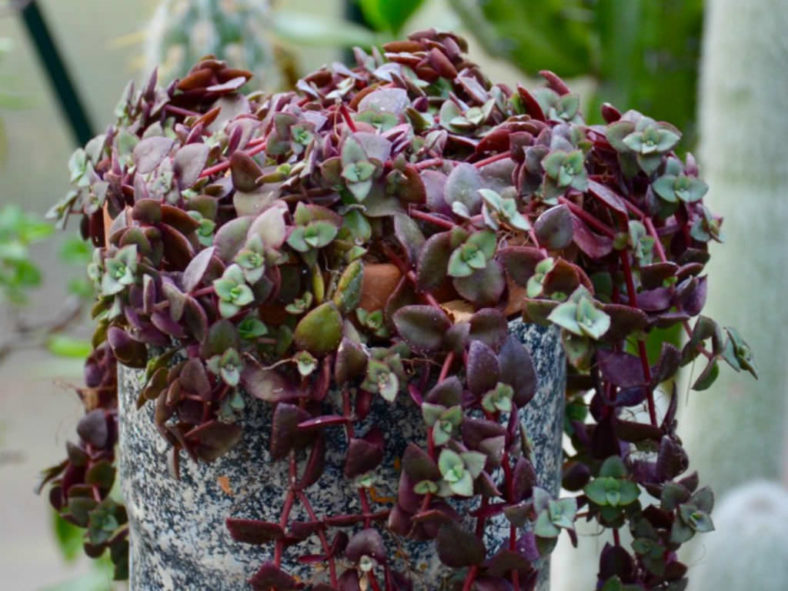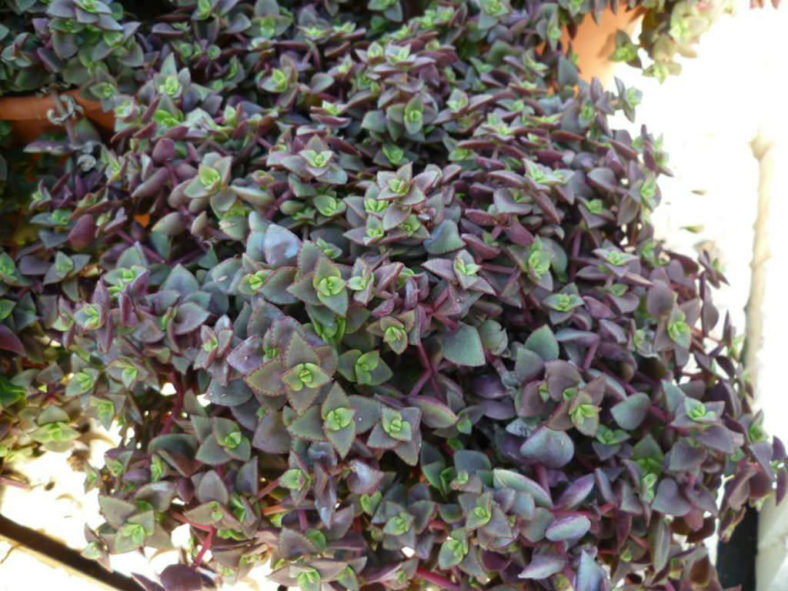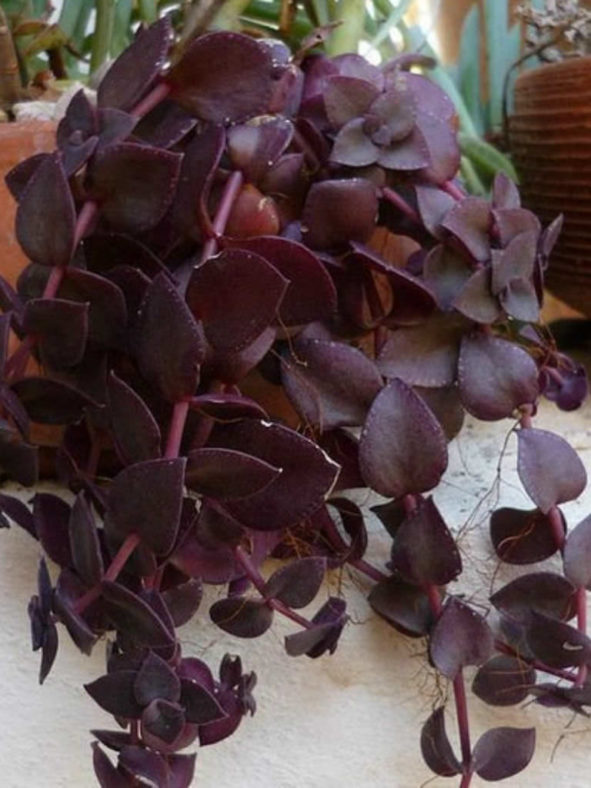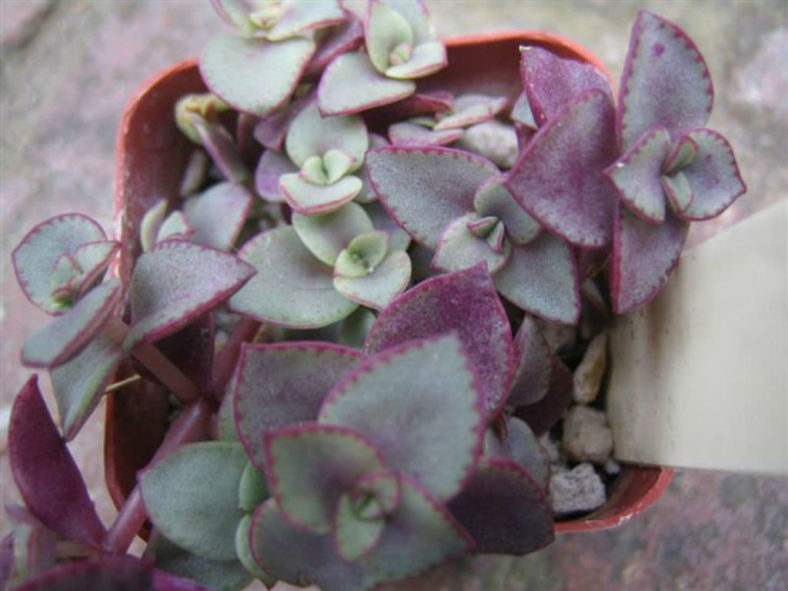Scientific Name
Crassula pellucida subsp. marginalis f. rubra
Accepted Scientific Name
Crassula pellucida subsp. marginalis (Dryand.) Toelken
Scientific Classification
Family: Crassulaceae
Subfamily: Crassuloideae
Genus: Crassula
Etymology
The formal epithet "rubra" (pronounced "ROO-bruh") means "red (color); ruddy" and refers to the color of the foliage of this form.
Origin
Crassula pellucida subsp. marginalis f. rubra is a form of Crassula pellucida subsp. marginalis, selected for its purplish-pink leaves.
Description
Crassula pellucida subsp. marginalis f. rubra is an attractive succulent with prostrate or scrambling branches that bear pairs of fleshy, heart-shaped leaves. It can grow up to 6 inches (15 cm) tall. The leaves are purplish-pink, edged with red and sometimes with a hint of yellow or green.
Inflorescences of white flowers emerge from the tips of the branches from late spring to early summer.

Hardiness
USDA hardiness zones 9b to 11b: from 25 °F (−3.9 °C) to 50 °F (+10 °C).
How to Grow and Care
Crassulas are easy to grow but susceptible to mealy bugs and fungal diseases. As with all succulents, overwatering is fatal, so err on the side of too dry rather than too wet. Never let your plant sit in water. If you water from beneath by allowing the plant to sit in a saucer, pour off any excess water after a few minutes.
These succulents are generally started by division, offsets, or leaf cuttings. Crassulas can be easily propagated from a single leaf. Sprout leaves by placing them into a potting mix for succulents, then cover the dish until they sprout.
Repot as needed, preferably during the warm season. To repot your Crassula, ensure the soil is dry before repotting, then gently remove the pot. Knock away the old soil from the roots, removing any rotted or dead roots. Treat any cuts with a fungicide. Place the plant in its new pot and backfill it with potting soil, spreading the roots as you repot. Leave the plant dry for a week or so, then begin to water lightly to reduce the risk of root rot.
Learn more at How to Grow and Care for Crassula.
Links
- Back to genus Crassula
- Succupedia: Browse succulents by Scientific Name, Common Name, Genus, Family, USDA Hardiness Zone, Origin, or cacti by Genus
Photo Gallery
Click on a photo to see a larger version.


